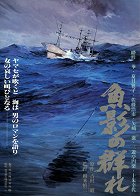Sinopsis(1)
A solitary fisherman raising his daughter on his own is taken aback when she tells him of her plans to marry a local youth who works in a café. The boy even offers to become the heir to his fishing operation, but the stubborn old man is not receptive... (Shochiku)
Reseñas (1)
Like, for example, Yasujiro Ozu’s films, one of the pleasures of Shinji Sōmai’s work is seeing how he reuses his characteristic formalistic techniques in every new film, but in a unique way. This refers not only to the long and complicated shots, but also to the subjective sound, scenes in the rain and the expressive stylisation of the entire mise-en-scène. However, Sōmai’s films provide not only the cinephilic joy of the creative handling of formalistic challenges that the filmmaker set for himself, but also a powerfully emotional viewing experience. Sōmai’s signature style was never an end in itself, but served as a means of distilling the effect from particular scenes and from the narrative as a whole. This is illustratively manifested in The Catch, which takes place in the setting of hardened fishermen hunting tuna on the open ocean. The serious drama is seemingly a complete departure for the Shochiku studio after Sōmai’s three previous coming-of-age idol movies. However, the difference in genre is offset by the consistency of the director’s signature style, which proves to be functionally universal for telling any story. Sōmai’s court screenwriter, Yôzô Tanaka, pulled from Akira Yoshimura’s novel the story of the youthful love between a daughter from a fishing family and a young man who, because of her, leaves his life in the city to become a fisherman. But the narrative focuses more on the brutish father of the fiancée and later bride, while gradually revealing fragments of his past foreshadowing the conflicts in the young couple’s relationship. The tragedy of the characters arises from the rarely verbalised but constantly felt existential distress that leads the men condemned to the role of providers to the usual obstinate macho paradox. They become so consumed with sacrificing themselves in the interest of their families, or rather in the associated messianic self-absorption and fear of not fulfilling their role, that they become toxic to their loved ones. In this case, this is compounded by the fact that fishermen’s livelihoods are physically demanding, hazardous to their health and extremely unpredictable with respect to their income. Sōmai brings all of these aspects of the central characters and their cohabitation and conflicts to the screen with almost depressing intensity. His long one-shot scenes lend the story a harsh naturalism, as they emphasise both the bleak setting of the fishing villages and, primarily, the toilsome nature of fishing in all its physical difficulty. With his stark and maximally effective conception of de facto manual fishing for huge tuna (with the aid of steel lines, hooks and ropes), he created sequences that, through their intensity, surpass even the wildest imaginings brought to readers’ minds by Hemingway’s The Old Man and the Sea. And yet these are far from the most impressive and emotionally charged parts of the film. As the former wife of the central, tenacious protagonist, fantastically portrayed by Ken Ogata, notes, relationships are merely the equivalent of tuna fishing for him. The passage involving their reunion years later in a rainy, seaside backwater town indelibly burns itself into the viewer’s memory with its imaginative execution and massive range on the emotional wavelength.
()
(menos)
(más)
